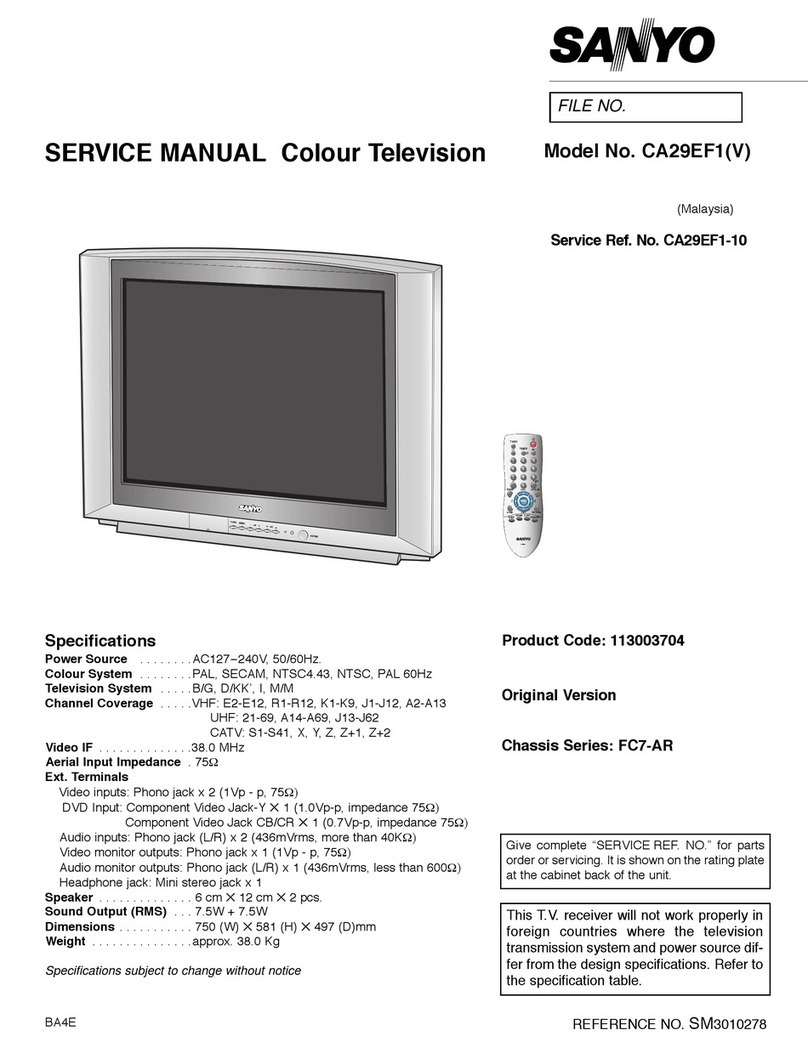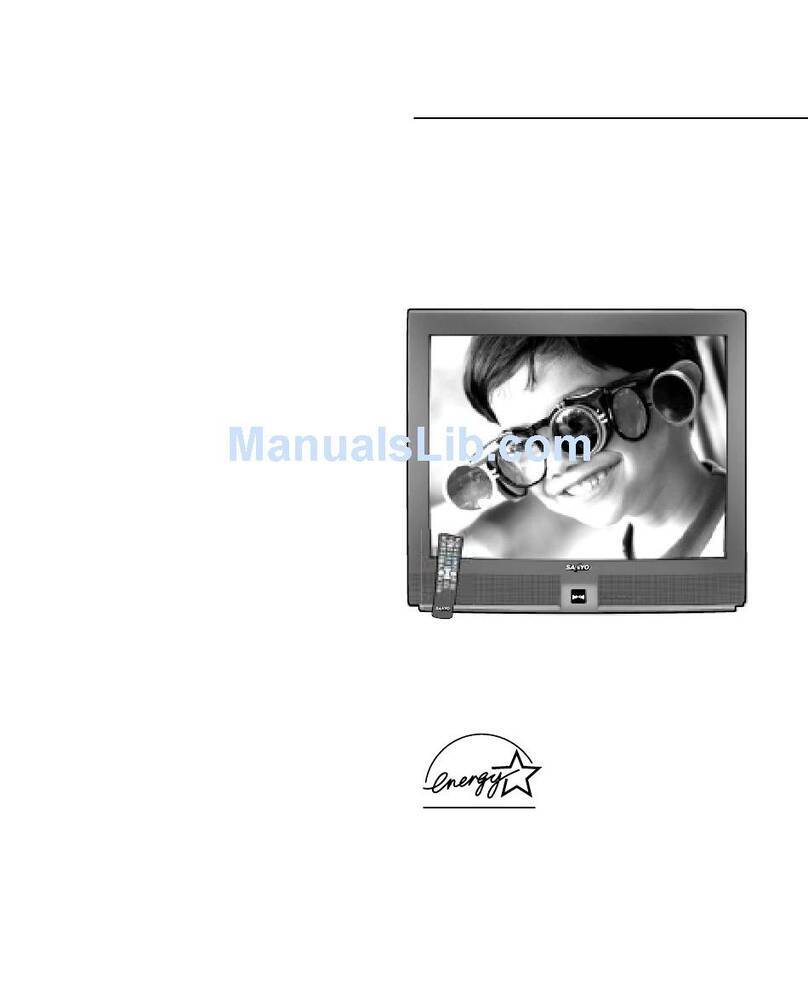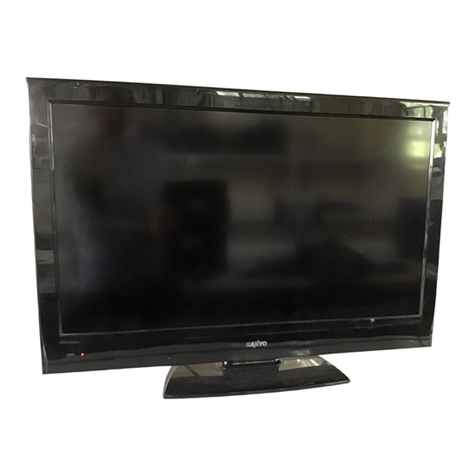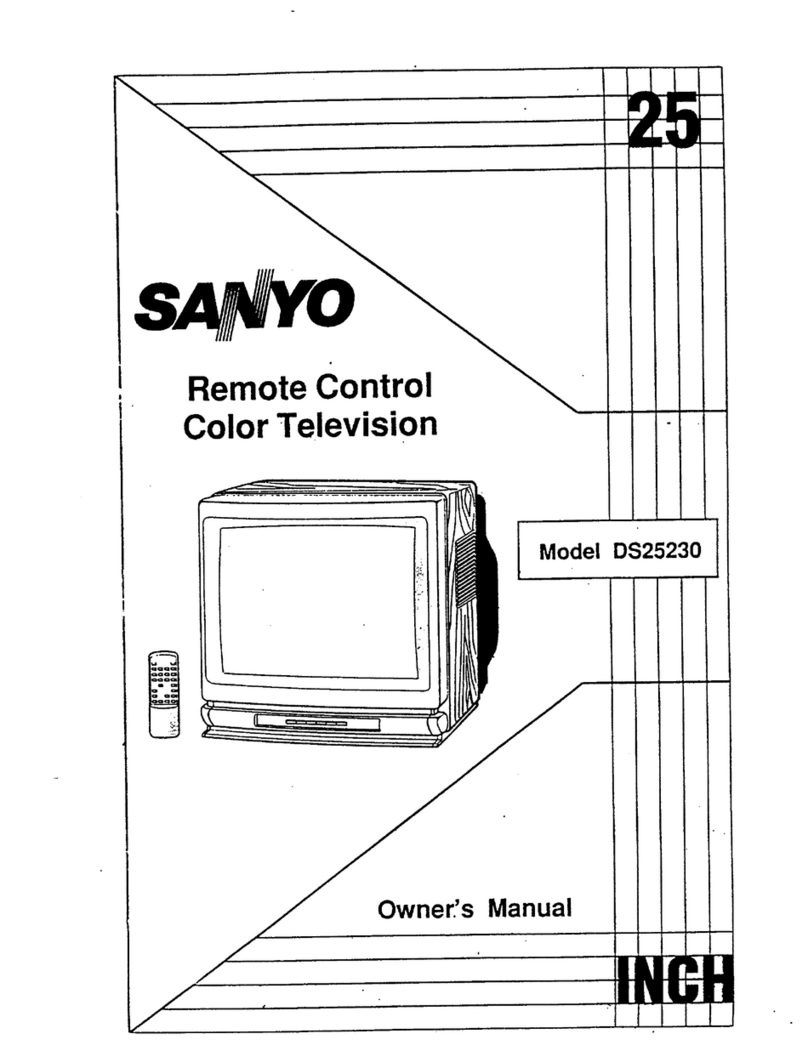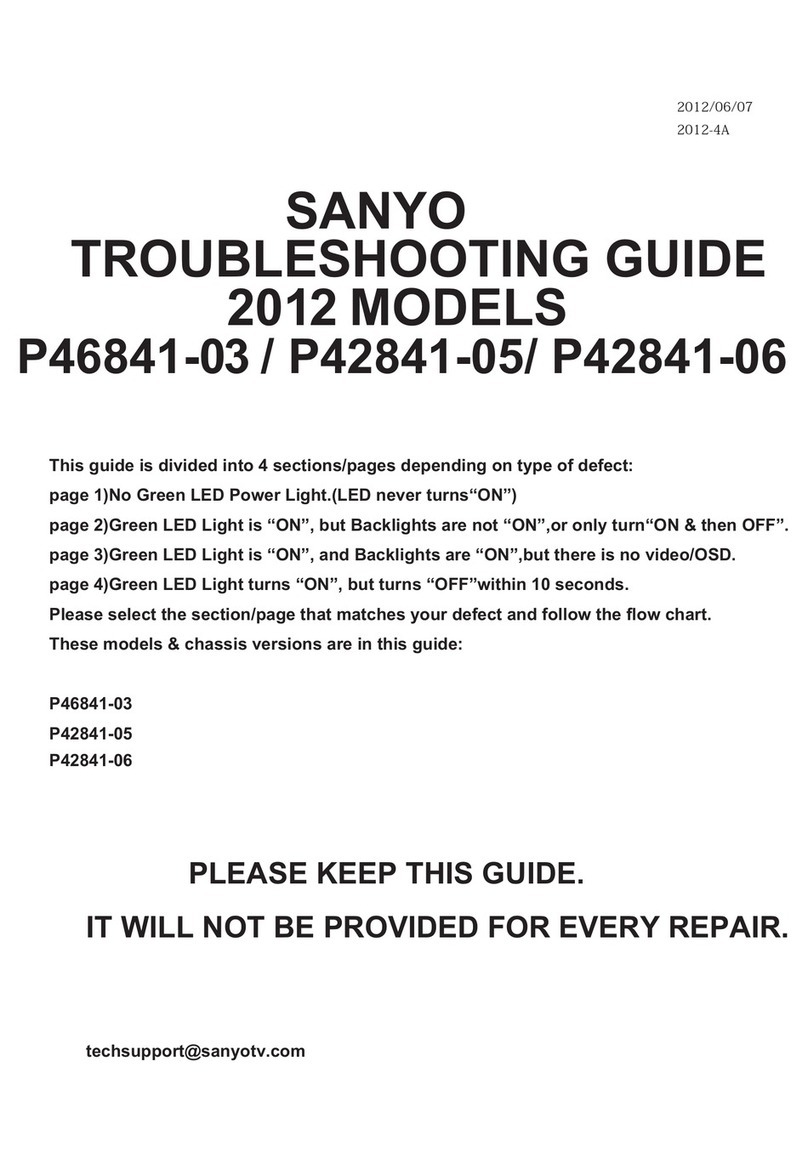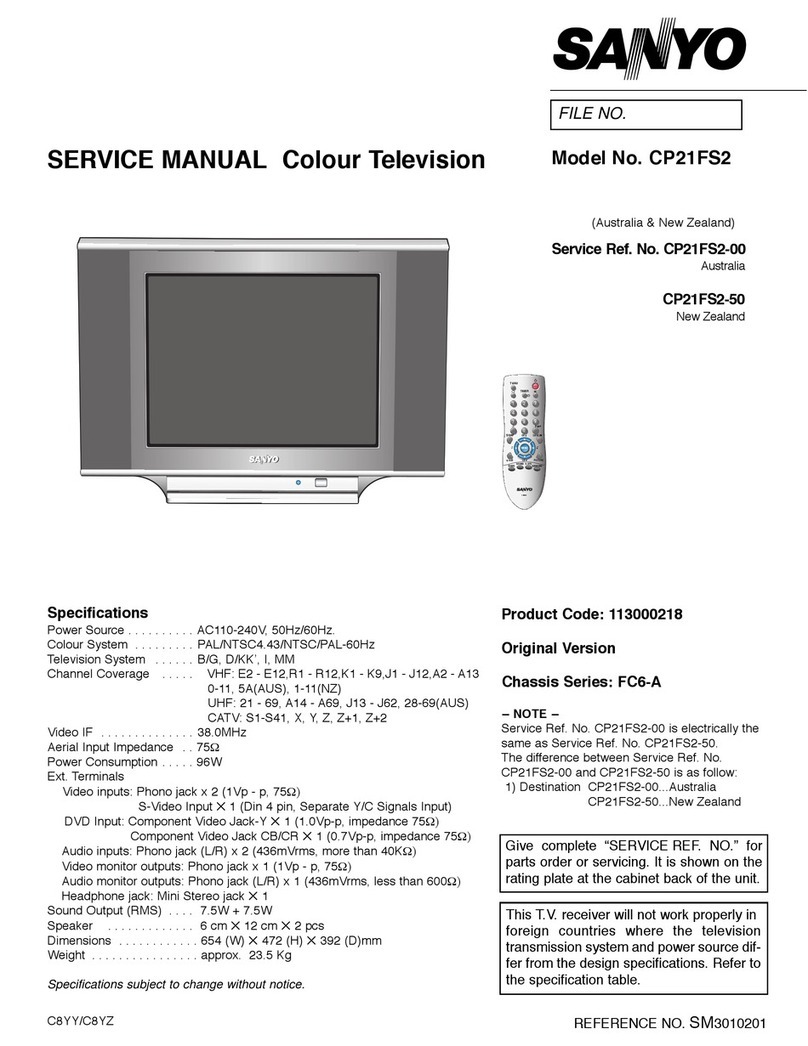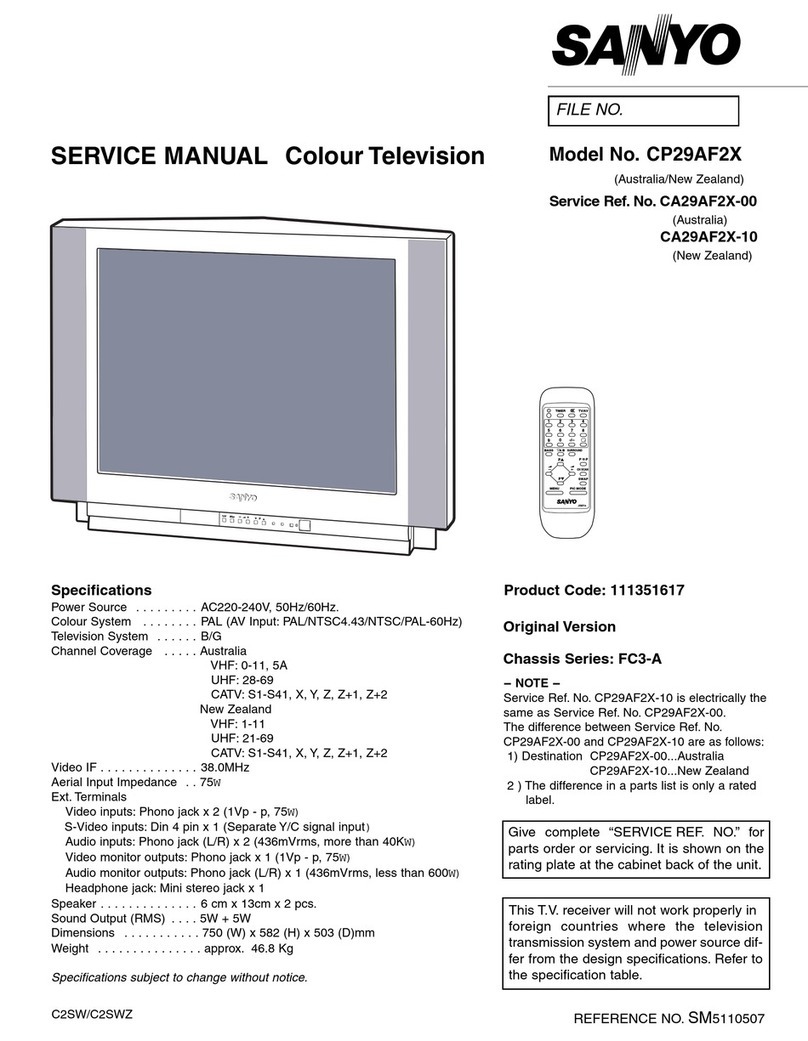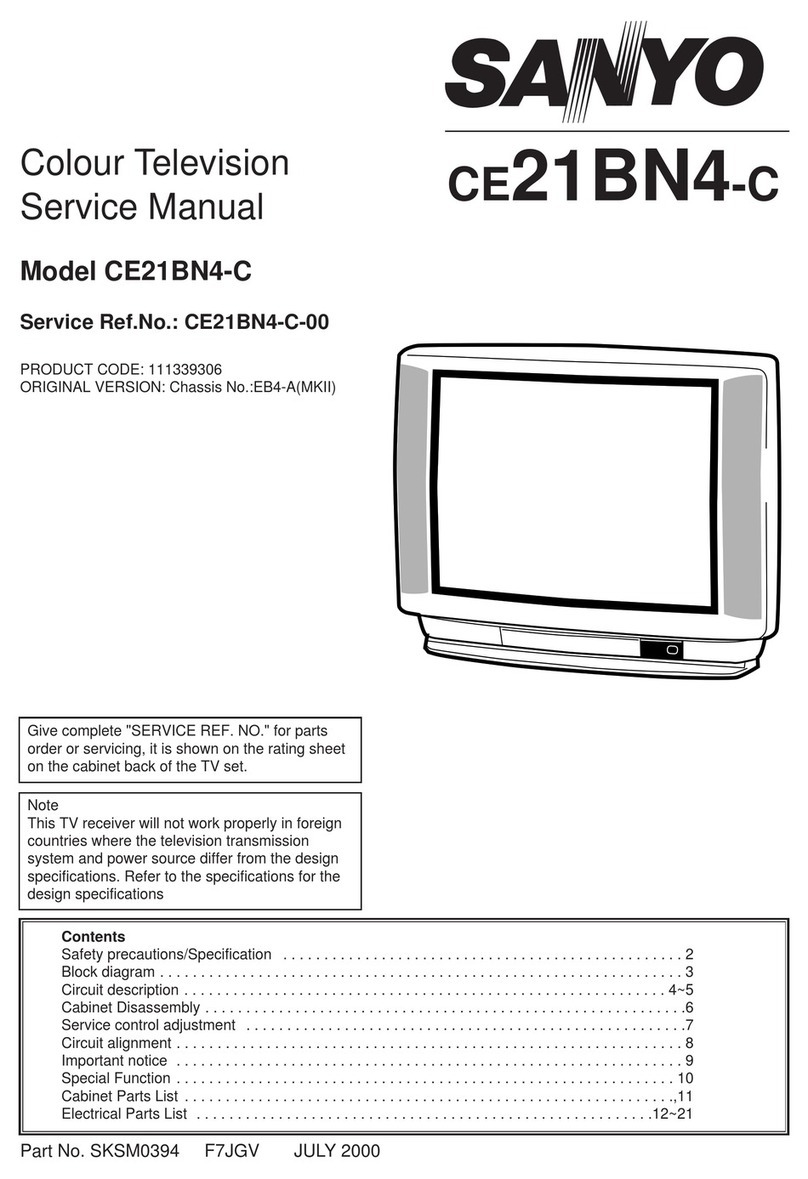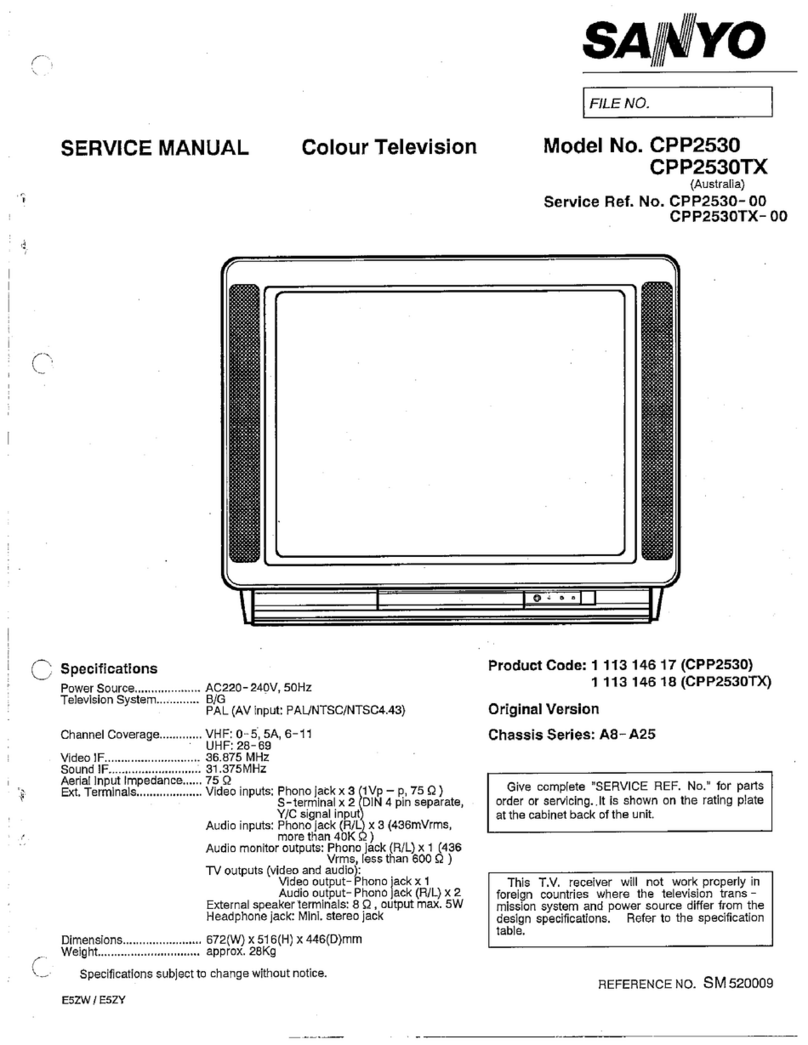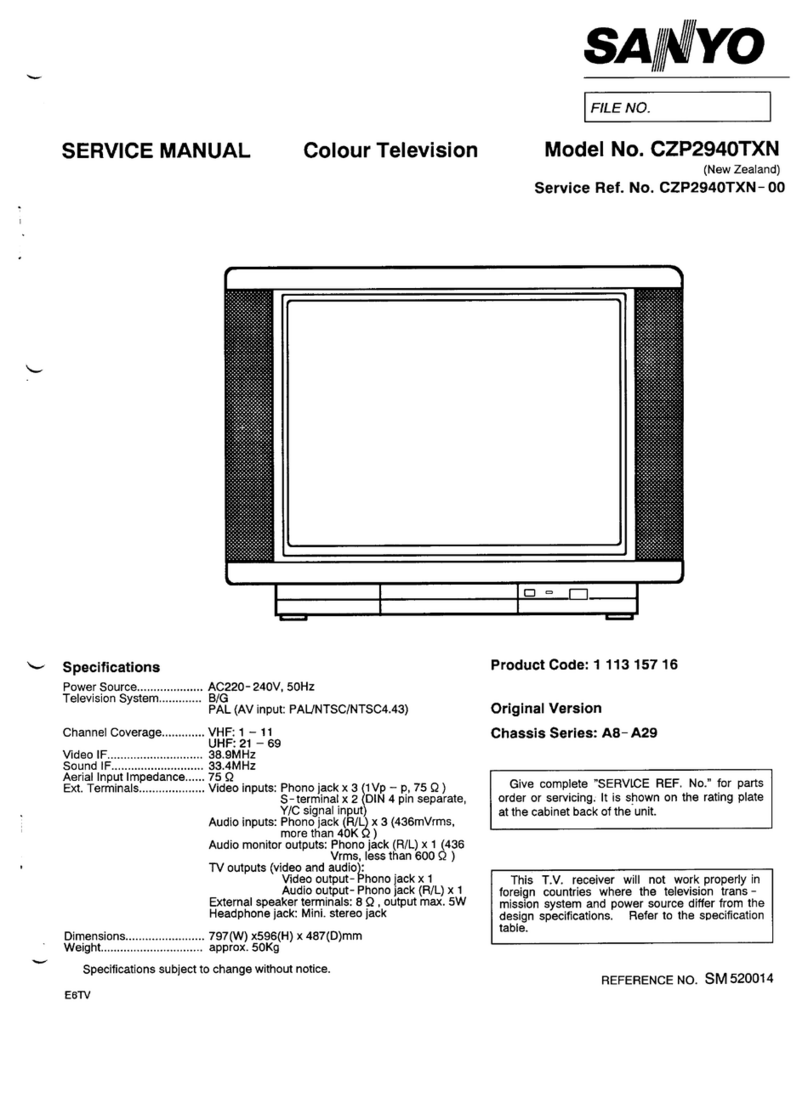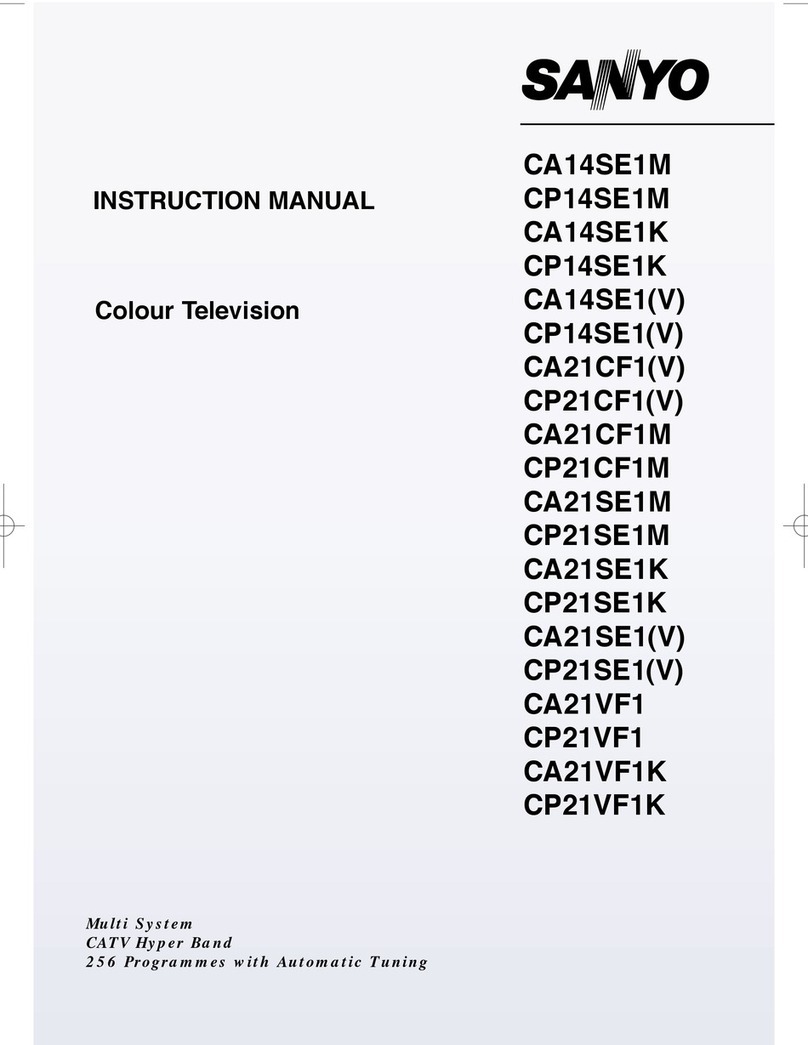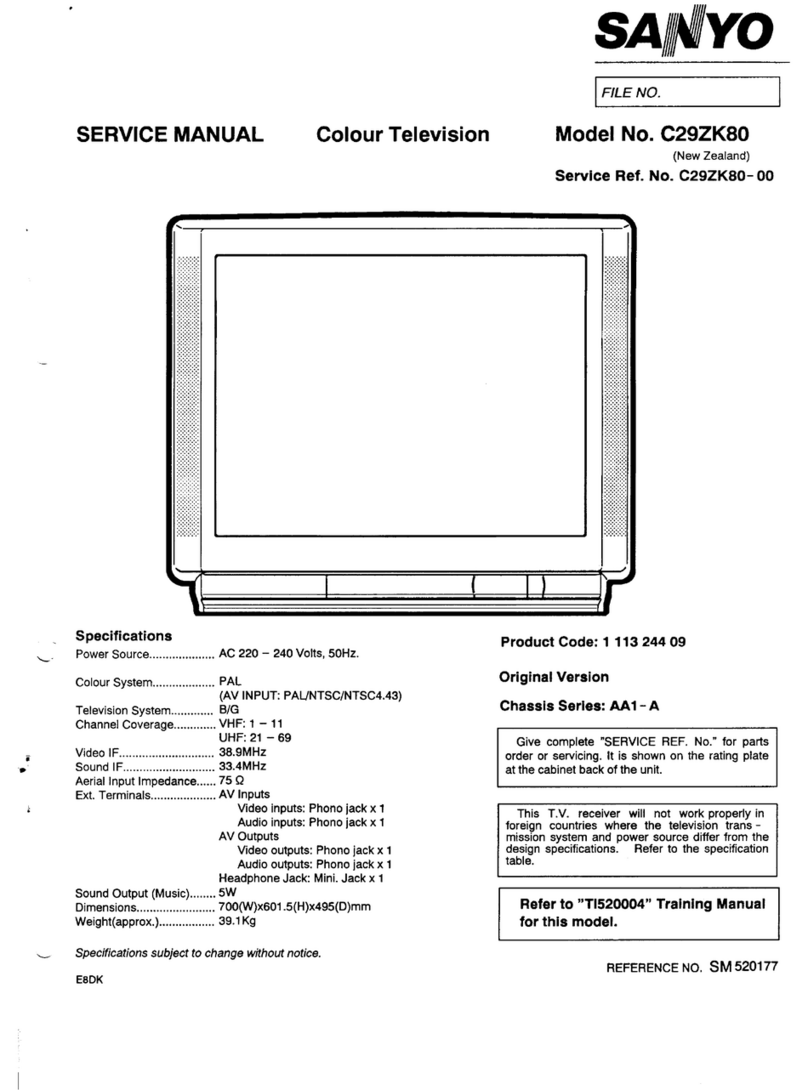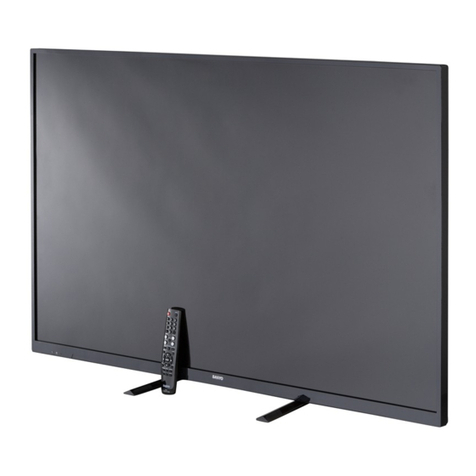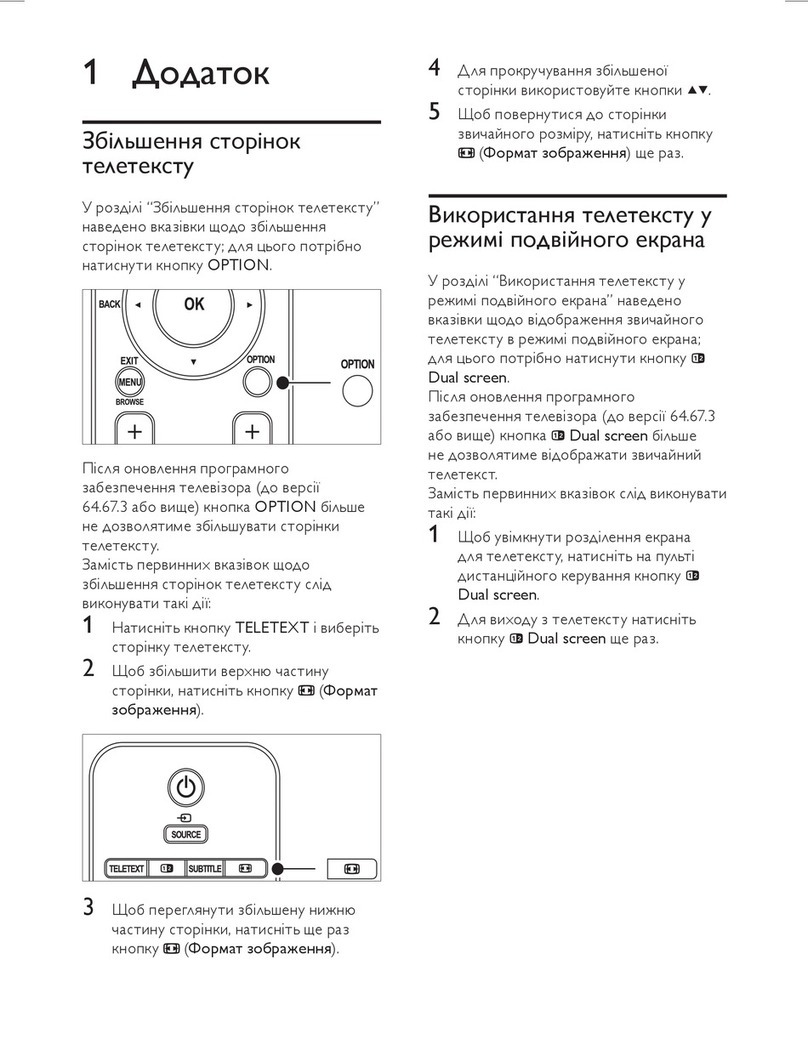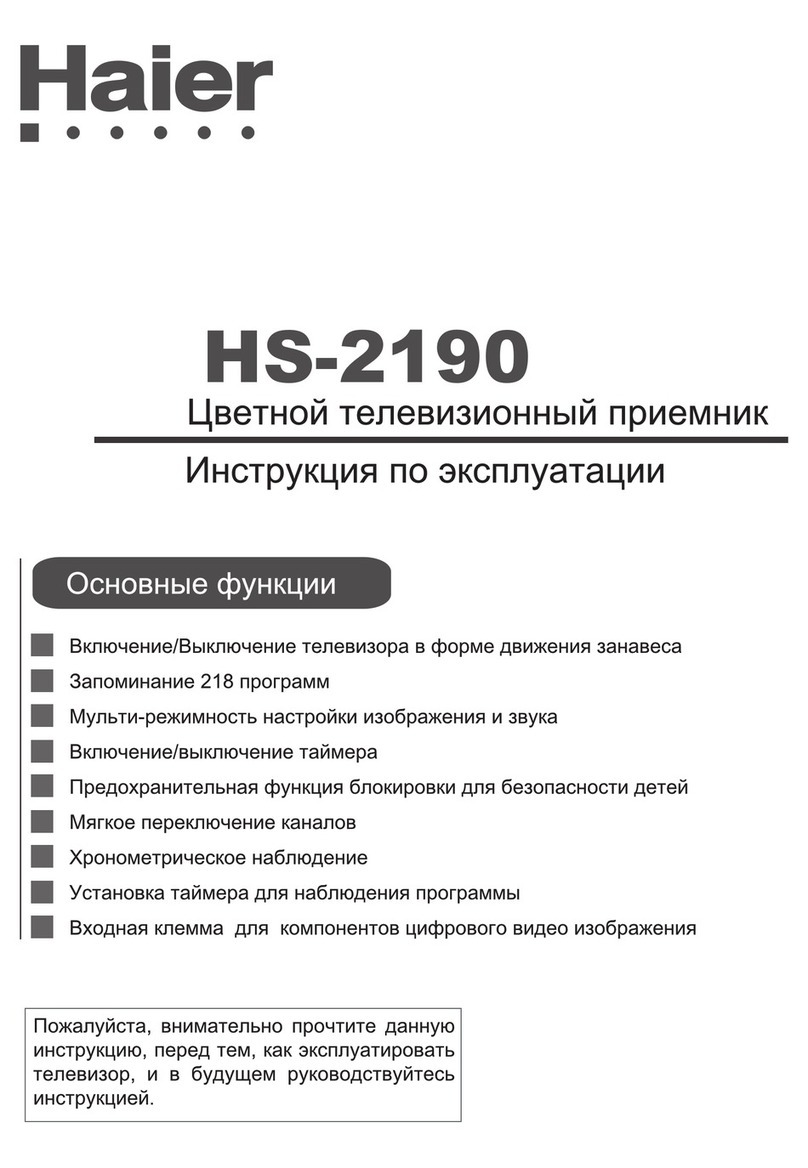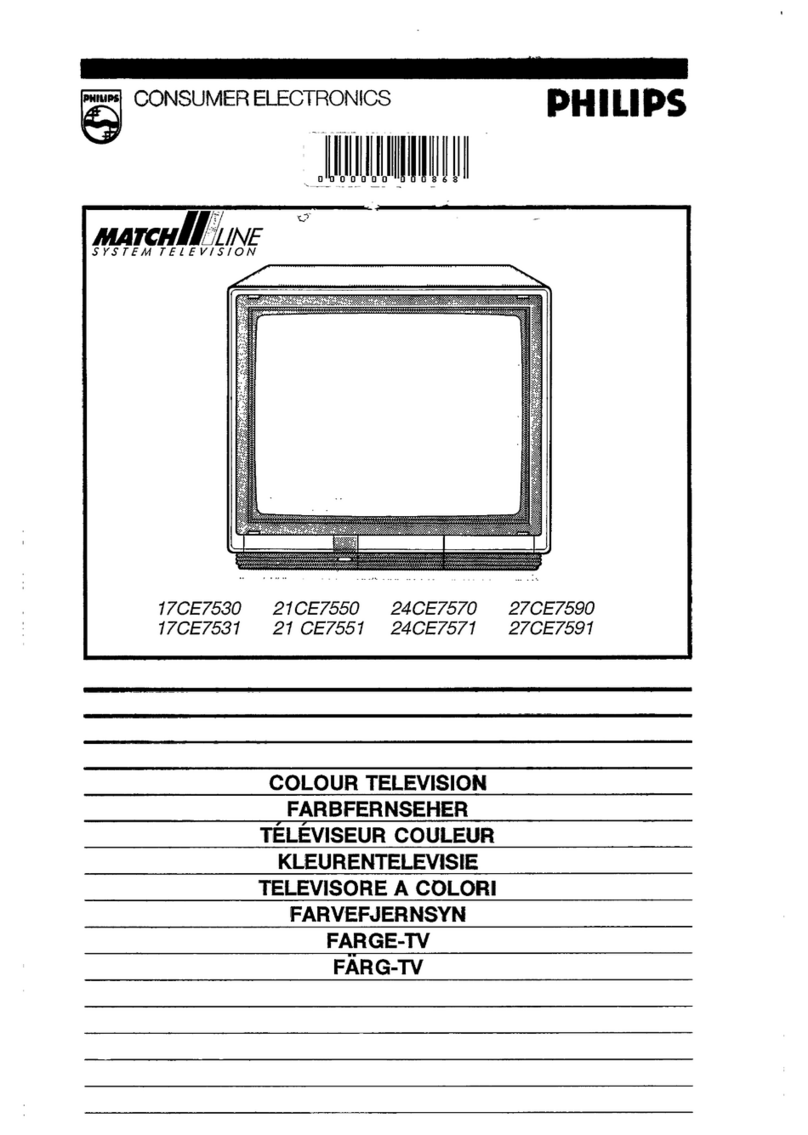CHASSIS DESCRIPTION
POWER SUPPLY
The power SUPPI ycircuit of the E3B chassis is composed
of arectifier smoothing circuit, an oscillation
circuit, acontrol circuit and an output rectifier
circuit.
The AC input VOI tage is ful l-wave rectified by the
rectifier smoothing circuit, and an astable DC voltage
is generated at both terminals of tha smoothing
capacitor C320. This voltage is input to the oscillation
circuit. The oscillation circuit is provided with a
blocking oscillator circuit that switches the switching
transistor Q323 ON and OFF, and an osci IIation frequency
and aduty square wave pulse are generated in the input
windings according to the operation of the control
circuit. Asquare-wave pulse whosa size is dependent on
the turn ratio of the input and output windings is
obtained in the output winding. This is rectified in the
output rectifier circuit, and the desired DC voltage is
obtained.
IF &DEFl_ECTION
The IF output signal from the tuner passes through the
SAW filter, and it is input to pin (6) and pin (7) of
IC180 and is input to pin (4) and pin (3) of ICICO.
Tha signal input to the IC180 passes through the IF
amplifier, video detection and video amplifier circuits
and it is output from pin (22) as acomposite video
signal, The output signal from pin (22) also passes
through the 5.5 MHz trap circuit of X197, and it is
input to pin (6) of IC2A0. The signal input to the ICICO
passes through the SIF amplifier, FM detector, volume
control and audio output circuit, and it is then output
from pin (15) as audio drive signal.
The sync. separation circuit separates the video signals
to vertical- and horizontal -sync .signals respect ivel y.
The horizontal-sync. signal passes through the IC401 and
it is applied to the gating circuit, and performs the
horizontal oscillation trigger.
The horizontal oscillation occurs as a result of the
circuit configuration consisting of C415, R420, VR411
and pin (15), and the horizontal free oscillation
frequent yis adjusted from pin (14). VR41O is for
adjustment of the horizontal cantring.
The separated vertical -sync .signal from the sync. -
separation circuit passes through the vertical-
separation circuit, and applied to the trigger divider
circuit. The horizontal oscillation pulse and input
vertical -sync .pulse are monitored by the trigger divider
circuit, and the switching (50Hz /60Hz) system.
The vertical amplitude is adjusted for 50Hz and 60Hz
automatically.
The output signal from the trigger divider is triggered
by the vertical oscillation circuit consisting’ of R404,
C404 and pin (4), and vertical drive pulse output from
VR405 is for changing the amount of AC feedback applied
to pin (2) and for adjustment of the vertical amplitude.
AUDIO OUTPUT <TDA1521>
The audio signal output from pin (13),(15) of IC850 is
input to pin (l),(9) of IC390 and passes through the
preamplifier circuit and the drive circuit, after that
it is input to the audio amplifier. The audio amplifier
is an SEPP (single-ended, push-pull) OTL type and
outputs to pin (4),(6) to drive the speaker directly.
VI DEO, CHROMA &R. G.B.
The composite video signal output from the pin (22) of
IC180 passes through Q1C3, Q5F2 and Q5F5, and it is
supplied to pin (15) of IC270 as the luminance (Y)
signal, to pin (15) of IC200 as the chroma signal.
The luminance signal input to the pin (15) of IC270 is
applied to the luminance amplifier and the contrast
control circuit. The gain control (contrast) is applied
by the pin (19) as DC voltage, and this signal is then -
input to the matrix circuit. The DC level of the
luminance signal can be varied (brightness) by the OC
voltage of pin (20).
The chroma signal input to pin (15) of IC200 passes
through the chroma amplifier, the saturation control,
the contrast control, and the output amplifier circuit,
and it is output to pin (12). The chroma signal output
to pin (11),(12) is input to the lH delay line circuit,
and ie divided into R-Y and B-Y chroma signals, and are
input to pin (11) respectively. The R-Y chroma signal
input to pin (11)isdetected by the CW signal which has
aphasa inversion of 180° every lH at the PAL switching
circuit, and is then taken out to the R-matrix circuit
as R-Y demodulated output. The B-Y chroma signal is
detacted by the CW signal which has no phase inversion,
and is then takan out to B-matrix circuit as B-Y
demodulated output. Tha R-Y and B-Y demodulated output
are matrixed G-Y matrix circuit, and G-Y demodulated
output taken out to G-matrix circuit.
The each R.G. B. matrix circuits are mixed the luminance
signal and aach R-Y, G-Y and B-Y demodulated output ._,
signal to obtain the red, green and blue primary colour
signals, and is applied tha each R.G.B. amplifier
circuits in the IC270. Tha signal passes through the
R.G,B. amplifier circuit are added to the blanking pulsa
which is producted by the sandcast signal input to pin
(10), and output to pin (1) as red signal, to pin
(3) as green signal, to pin (5) as blue signal.
The reference osci IIator operates at twice tha
subcarrier frequency which phase and frequency are
controlled by the burst phase and the fraquency of the
chroma signal. The oscillator can be adjusted by the
voltage of the phase detector output.
–3–
